Improve your striding form – and boost your all-round
fitness – with these conditioning workouts designed to match your running goals
Fed up with being told to work the weights? Sure, we get it
- you’d rather be clocking up the miles outside. So we’ll level with you -
distance runners don’t need to log hours and hours in the gym pumping a load of
iron to run speedily. Case in point - Mo Farah’s lean and lithe body is
testimony to the fact that he spends more time running fast than heavy lifting!
However, no runner can argue with the fact that conditioning
your body to better handle the stress and strain of the repetitive running
action is wise. ‘Whatever distance, speed or level runner you are, you’ll want
to run to the best of your ability and stay injury free,’ says John Shepherd,
author of Strength Training For Runners. ‘And the training you do off the
roads, trails or track - that is, strength training or, as sports coaches call
it, conditioning work - can make a great difference to your running.’
Choose your style
The key is to schedule strength work to fit seamlessly with
your running goals, and choose exercises that mimic the muscles, movement and
energy systems specific to the type of running you do.
For the seasoned competitors among you, this may mean
logging your strength sessions into pre-race months and weaning off weight work
when competition season arrives. For everyone else, the conventional advice is
to do resistance exercise once or twice a week, leaving 48 hours of rest in
between strength sessions. Regular runners may find that weight work falls on
running days, so try to blitz your running session before hitting the weights
to ensure you’re not tired from lifting.
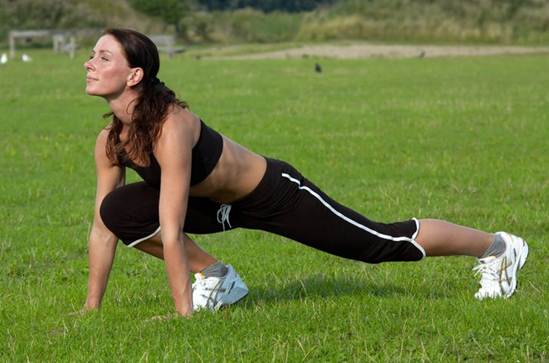
Regular runners
may find that weight work falls on running days, so try to blitz your running
session before hitting the weights to ensure you’re not tired from lifting.
It’s clear that runners come in all shapes and sizes - from
super-stable trail runners, to primed-for-power sprinters. So, whether you
prefer to run on trail, track or tarmac, we’ve got a conditioning workout for
you. Each of the following mini workouts has been designed to prime the skills
needed for your striding style. The best bit? You needn’t step inside a gym to
do them!
If you want to… sprint to success
Jumping exercises - also known as plyometric - will increase
your speed. Running is a form of single-leg jumping, after all. ‘The more
dynamic your legs become, the more power they are able to supply for each and
every stride,’ explains Shepherd. This is not only great news for sprinters,
but also for endurance runners who want a speedy edge. In fact, a study
published in the Journal of Applied Physiology found that plyometric increased
5K times in well-trained athletes. Opt for hopping, jumping and other
rebounding exercises.
1.
Tuck jumps (6 reps; 4 sets)
Stand tall with your feet shoulder-width apart and arms at
your sides. Lower to a quarter squat, then jump and bring your knees to your
chest. Aim for maximum height. Try to land softly, and repeat.
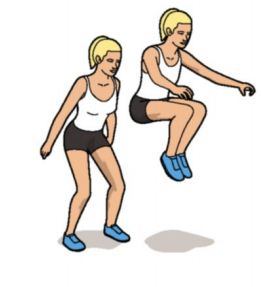
Tuck jumps
2.
Box taps (30 seconds; 4 sets)
Stand in front of a box with your feet hip-width apart.
Quickly alternate tapping the top of the box, rebounding off the ground in a
running motion. Use an alternate arm swing for co-ordination and balance.
Repeat for 30 seconds.
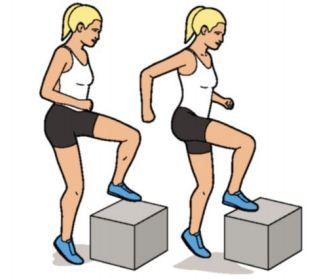
Box taps
3.
Drop jump to sprint (2 reps; 4 sets)
Stand on a box in a half-squat position with toes close to
the box edge. Jump off the box to land on two feet. Immediately, rise up and
sprint for 20-30m.
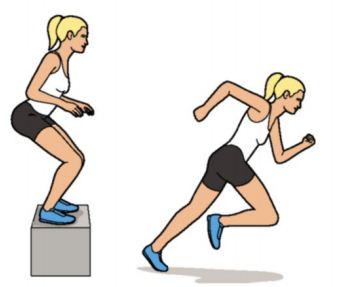
Drop jump to
sprint
If you want to … train on trails
Slipping on mud, sprinting around rocks and staying upright
downhill are not only key to off-road running, but also likely to put your
balancing skills to the test. The undulating terrain will work your
proprioceptive skills (your ability to react to moving ground instinctively)
while steep descents will test your eccentric muscle strength, which occurs
when a muscle lengthens under load. ‘Sore legs are often the result of the
eccentric, breaking muscular action going on in your quadriceps,’ explains
Shepherd. ‘You can condition against this by performing eccentric exercises and
improve balance with single-leg work.’
1.
Single-leg balance (as long as possible; 5 sets)
Stand on a Bosu ball or a similar unstable surface (a rolled
up towel will do) and lift one leg up, bending the standing leg slightly. Close
your eyes and stay in this position for as long as you can. Move your arms
around to create stability. When you lose balance, repeat.
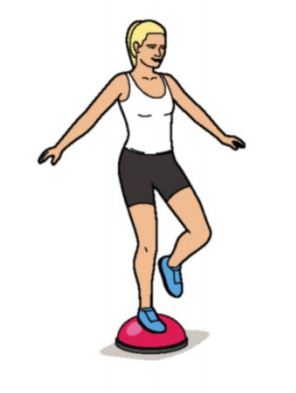
Single-leg balance
2.
Backward lunge with twist (6 reps; 4-5 sets)
Stand with you’ feet shoulder-width apart and core engaged.
Step your left leg backward into a lunge and keep your right thigh parallel to
the ground. Keeping your lower body stable, twist from the waist to the right.
Step back to standing and twist back to center. Repeat on the other side to
complete one rep. Hold a medicine bail to make it harder.
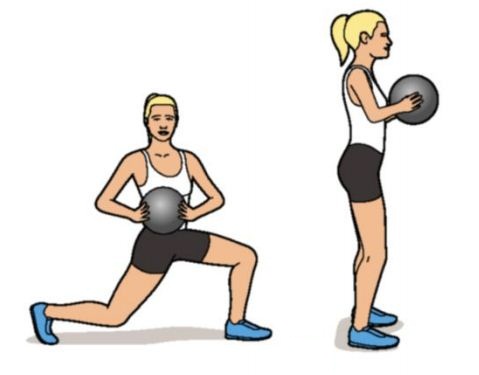
Backward lunge
with twist
3.
One-legged jump (10 seconds; 3 sets per side)
Start standing and bend your left leg behind you to create a
hopping position. Imagine you have a square grid drawn out on the floor and hop
forward, to the right, backward and to the left. Swing both arms to aid height
and movement. Repeat for 10 seconds and then swap sides.

One-legged jump
If you want to…pace the pavement
While remaining lean is crucial for long-distance roadies,
endurance runners should work to improve whole-body strength in relation to
bodyweight. Your body is forced to absorb three to four times your bodyweight
with each footfall, after all. ‘Putting In the miles will slow you down as your
slow-twitch muscle fibers develop,’ says Shepherd. ‘These are great at
producing continuous muscle contractions, but you need last-twitch fibers to be
efficient, too.’
Work on your all-round strength by doing bodyweight moves
such as push-ups, squats and lunges, and do 6 x 60m sprints before your long
runs to boost your fast-twitch fibers.
1.
Bodyweight squat (10 reps; 3 sets)
Start in the standing position with your feet shoulder-width
apart, arms behind your head. Lower your body to a 900 angle by bending at the
knees and pushing your bottom backward. Pause and then slowly return to
standing.
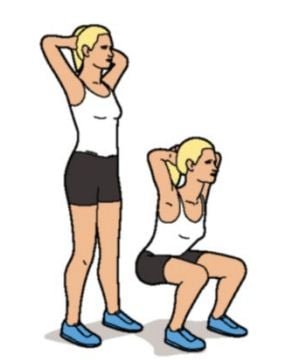
Bodyweight squat
2.
Walking lunge (10m lengths; 3 sets)
From standing, take a large step forward Into a lunge by
lowering your hips to the floor and bending both knees. The back knee should
come close to (but not touch) the ground and the front knee Is directly over
the ankle. Push off with your back foot and lunge forward again. Continue for
10m and then turn around and lunge-walk back again.
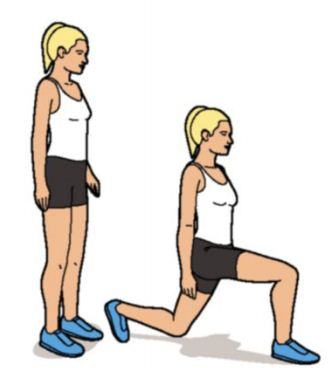
Walking lunge
3.
Standing heel raises (10 reps; 3 sets)
Stand on flat ground with your feet hip-width apart. Raise
your heels a few inches off the ground so that you are on your tiptoes. Hold
for a few seconds and then lower your heels back down. Make the exercise harder
by performing on a step or with dumbbells.

Standing heel
raises
4.
Swiss ball roll-outs (10 reps; 3 sets)
Kneel on a mat and place your forearms on an exercise ball.
Lean into the ball, engaging your core, and extend your arms to roll the ball
away. Draw the ball back towards you and repeat.
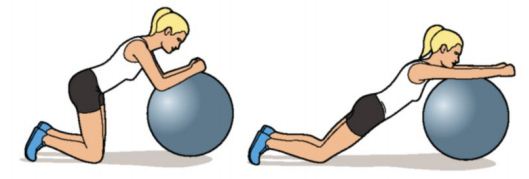
Swiss ball
roll-outs